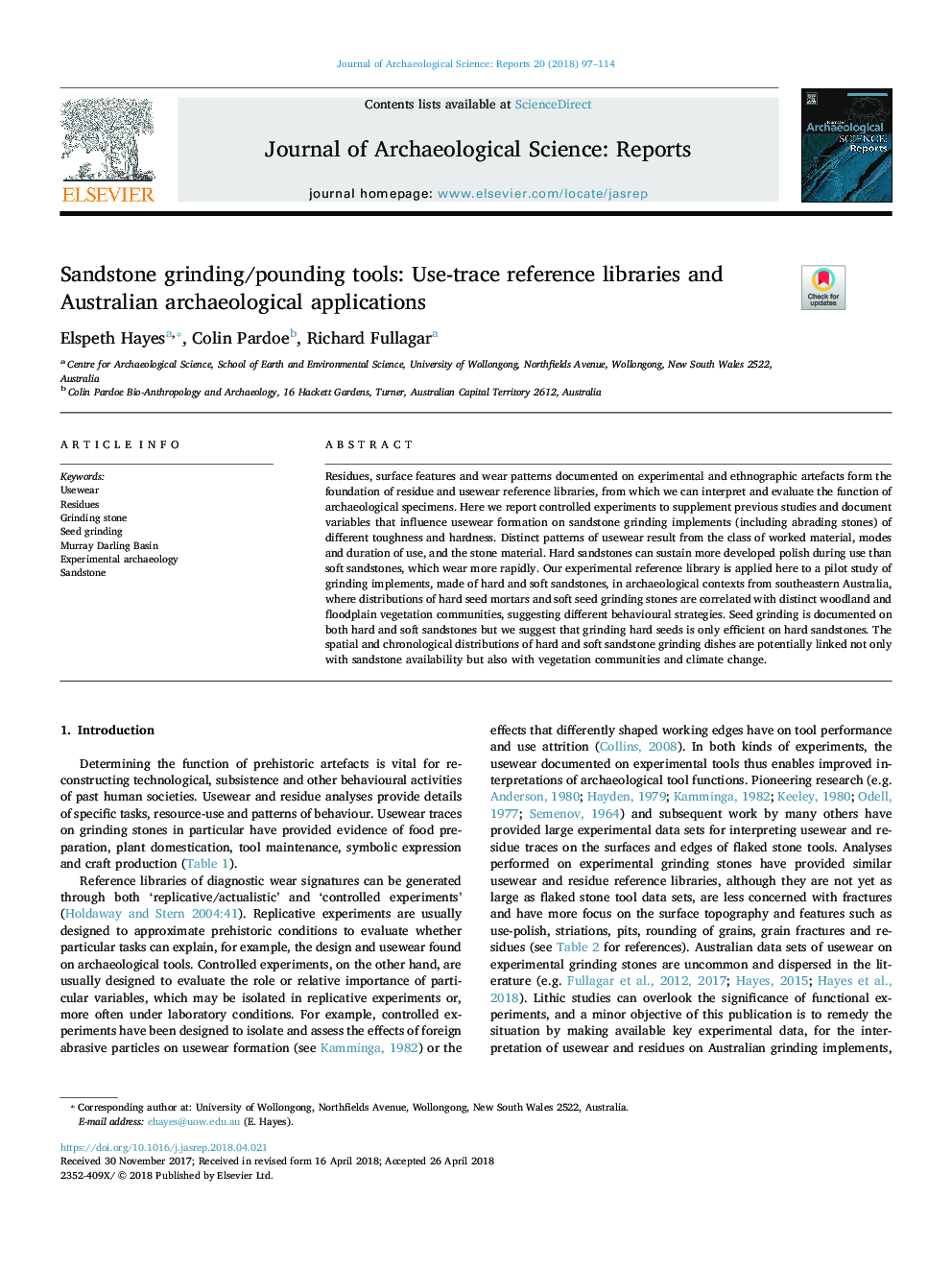| Article ID | Journal | Published Year | Pages | File Type |
|---|---|---|---|---|
| 7444243 | Journal of Archaeological Science: Reports | 2018 | 18 Pages |
Abstract
Residues, surface features and wear patterns documented on experimental and ethnographic artefacts form the foundation of residue and usewear reference libraries, from which we can interpret and evaluate the function of archaeological specimens. Here we report controlled experiments to supplement previous studies and document variables that influence usewear formation on sandstone grinding implements (including abrading stones) of different toughness and hardness. Distinct patterns of usewear result from the class of worked material, modes and duration of use, and the stone material. Hard sandstones can sustain more developed polish during use than soft sandstones, which wear more rapidly. Our experimental reference library is applied here to a pilot study of grinding implements, made of hard and soft sandstones, in archaeological contexts from southeastern Australia, where distributions of hard seed mortars and soft seed grinding stones are correlated with distinct woodland and floodplain vegetation communities, suggesting different behavioural strategies. Seed grinding is documented on both hard and soft sandstones but we suggest that grinding hard seeds is only efficient on hard sandstones. The spatial and chronological distributions of hard and soft sandstone grinding dishes are potentially linked not only with sandstone availability but also with vegetation communities and climate change.
Related Topics
Social Sciences and Humanities
Arts and Humanities
History
Authors
Elspeth Hayes, Colin Pardoe, Richard Fullagar,
